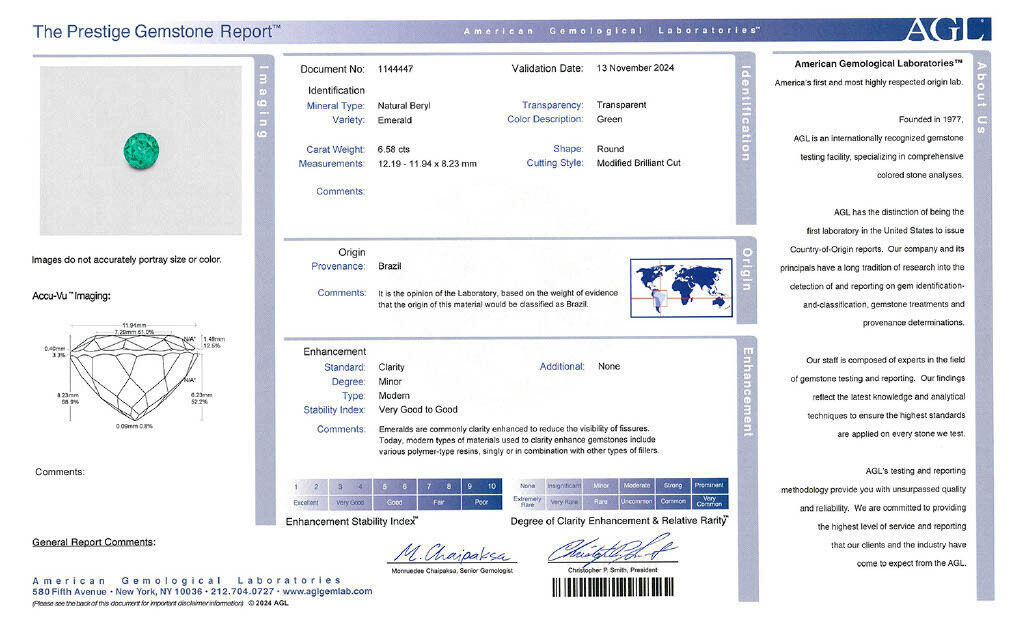

Award Winning Brazilian Emerald, Paraiba Tourmaline & Diamond Ring
Gemstone Details
Emerald
Believed by the ancients to empower the owner with foresight into the future, emerald is regarded as an amulet of good fortune.
The rich green hue brings to mind the regeneration of spring and hope for new possibilities. "Spring" can also be seen in the network of inclusions within emeralds that the French coined as jardin, or garden, because it often resembles mossy foliage. The inclusions are like a fingerprint, giving each emerald a distinct personality and distinguishing them as truly natural gemstones.
Early gemstone merchants sought to purify the transparency of their emeralds by immersing them in clear oils or paraffin. They found that clear oils and waxes rendered surface fissures less visible to the eye. Today, there are many sophisticated technologies used to clarity enhance emeralds; in addition to oils and waxes, resins are often used. Hardeners might also be added to solidify these liquids. This is a common practice when dealing with emeralds, and most gemological labs will grade the degree to which an emerald has been enhanced.
Today most of the world's emeralds are mined in Colombia, Brazil and Zambia; although other deposits have been found in Afghanistan, Pakistan, Russia, and most recently, North Carolina.
As the gem of spring, Emerald is the birthstone for May; it is also the gem of the 20th and 35th wedding anniversaries.
Paraíba Tourmaline
Neon blue copper-bearing tourmaline was discovered in the hills of the Brazilian state of Paraíba, in the late 1980's. Various gemological laboratories performed testing on the new material and discovered that it was a natural elbaite tourmaline. Elbaite is generally achromatic, which means the crystals are colorless unless there are trace elements present in the chemical formula. In the case of Paraíba tourmaline, the crystals contain trace amounts of copper, which give the gemstones their unique and vibrant color and the reference of cuprian, which stands for copper-bearing. This variety of tourmaline was officially named "Paraíba tourmaline" after the state in Brazil in which it was discovered.
Their rarity is unmatched, as there is only one Paraíba tourmaline mined in Brazil for every 10,000 diamonds, and a fine quality Paraíba over three carats is virtually unheard of. A point to keep in mind is that copper bearing tourmalines have been mined in Mozambique, Nigeria and other localities, however, they are referred to as Paraíba-type tourmalines, because a true Paraíba tourmaline can only come from Brazil, making it all the more rare.
Color is perhaps the most important variable when comparing these stones, all other things being equal. Inclusions are to be expected and forgiven when judging fine stones, as long as saturation of color and brightness remain strong. Nearly every other shade of tourmaline is found in Brazil, however none has the vivid glow that distinguishes the Paraíba tourmaline. Colors ranging from bright turquoise to majestic blue-green to “windex” blue, it’s the incandescent glow that appears to light up the stone from within that makes Paraíba tourmalines incomparable to any other gemstone.
Tourmaline is the birthstone for October and the gift for the eighth wedding anniversary.


